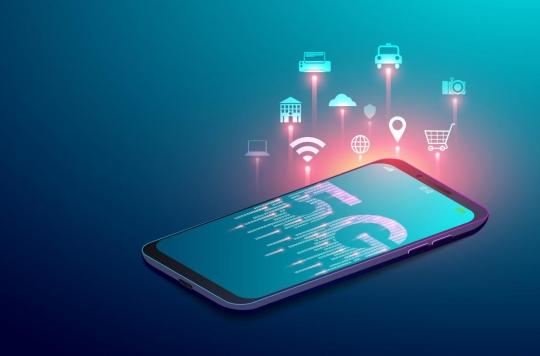Before the commercial opening of 5G, scheduled for the end of the year, Olivier Véran, Minister of Health, and Élisabeth Borne, Minister for the Ecological and Inclusive Transition, asked the Prime Minister to wait to find out. more about the health effects of the new frequencies.

- To be deployed, the G5 will have to use millimetric sequences around 3.5 and 26 GHz which raise questions about their effects on our health.
- An ANSES study on the effects of new frequencies on our health is scheduled for the end of the first quarter of 2021
The 5G revolution will have to wait. Scheduled for the end of the year and supposed to replace 4G by 2023, the fifth generation of standards for mobile telephony promises a “ultra connectivity”according to the terms used by the Regulatory Authority for Electronic Communications, Posts and Press Distribution (Arcep). This ultra-powerful technology will allow us to control thousands of devices remotely, to navigate on our smartphone even more fluidly and quickly than at present, and to develop augmented reality and virtual reality applications.
Obtain ANSES’s opinion
The development of this technology is not without risk. To develop, 5G will use new frequencies. Some are close to those used by 4G and have already been studied by scientists. To allow higher speeds, it will have to use millimetric sequences around 3.5 and 26 GHz, which raise questions. “5G will use new frequencies, 3.5 Ghz or 26 Ghz. If the first remains relatively close to the frequencies for 4G for which data is already available, no study exists to date on the 26 Ghz frequency which must be deployed around 2025 with direct penetration into the body and absorption. by the first layers of the skin”noted several Les Républicains deputies who are calling for the creation of a commission of inquiry into the effects of 5G on health.
This Sunday, Olivier Véran, Minister of Health, and Élisabeth Borne, Minister for the Ecological and Solidarity Transition, asked the Prime Minister, Édouard Philippe, to delay before the start of 5G. They first want to obtain the opinion of the National Agency for Food Safety (Anses), the Environment and Labor, as revealed by Elisabeth Borne in the Sunday newspaper. “Citizens demand an assessment of the impacts in terms of health and the environment”, she summarizes. The results are expected by the end of the first quarter of 2021.
A not easy study
In a preliminary report dated January 27ANSES warned against “a lack of scientific data on potential biological and health effects” from exposure to these new frequencies. Studying the effects of frequencies on our health is not easy, as Yves Le Dréan said, researcher for Inserm in the Irset unit (Institute for research in health, environment and work) of the University of Rennes, at Pourquoi doctor. “There are many methodological biases that may suggest that there is an effect [des ondes sur la santé humaine, NDLR] whereas this area is special because it requires dual skills, in biology and electronics. However, we see teams competent in biology but not at all in electronics conducting studies on the subject. They therefore see the biology moving but do not know if it is due to the waves or to the microwave effect of their exposure system which is not at all controlled. Conversely, there are studies carried out by physicists where the exposure is well controlled but not the biology. But these papers can still be published, depending on whether the journal is specialized in biology or electronics..”















